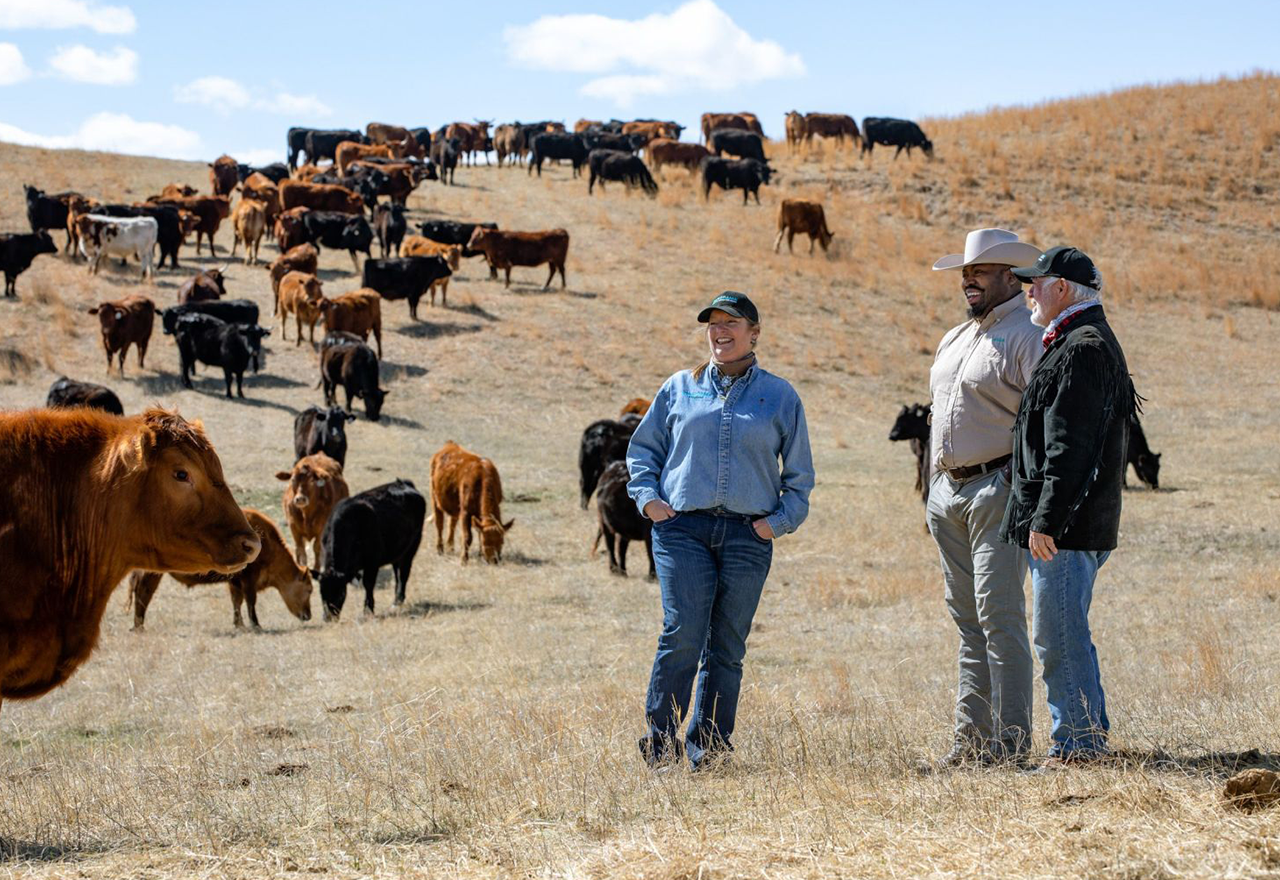By Kestrel Burcham, JD
The Hutchinson Organic Ranch embodies the best in organic ranching today by adapting their practices to the needs of their land. Dave Hutchinson, with his wife Sue, daughter Sarah Drenth, her husband Jared, and their daughters live and work in an idyllic landscape of the Nebraska Sandhills, marked by abundant wildlife, rolling perennial grassland, and artesian springs.
Dave and his family are deeply dedicated to organic principles: Over more than 40 years of operation, the grassland has never been fertilized or treated with other chemicals. “We are certified organic because we want that credibility,” Dave says. “These principles are a deep foundation for everything we do on the ranch.”
The Hutchinsons’ ranch was also recently certified by Audubon’s Conservation Ranching Program. When Audubon’s auditors initially came to the ranch they didn’t see much to improve on: because of the careful management of livestock on the land, wildlife was already present in abundance. The Hutchinsons even see vulnerable species, including whooping cranes, returning to the land.
The Nebraska Sandhills are one of the country’s most fragile ecosystems, with delicate soils and wetlands rising from the massive Ogallala Aquifer. Deep-rooted grasses are needed in this environment to stabilize the dunes prevalent in the area. Dave extrapolates how their ranching co-exists with this sensitive environment: “When you graze the way we do, the grass root systems go down 10 to 13 feet. Among other benefits, this stable root structure holds the moisture in, so that during dry spells we have a lot of reserve to rely on.”
There are other advantages to the Hutchinson’s grazing program. Moving their cattle and buffalo frequently protects and even improves riparian areas. The animals’ trampling hooves help to mulch dead grass and spread seeds so that the ranchers never have to re-seed. Because the family uses adaptive management, they are quick to rest areas longer when the grasses are young or the topsoil is fragile. “If you have healthy soil, you have healthy plants; and if a beef animal consumes those plants, you have a healthy product for consumers,” Dave says.
The cattle are bred specifically to do well on their 100% grass diet. Just as healthy and resilient soil is a product of a robust microbiome, cattle rely on the health of their internal microbiome to thrive.
“Feeding beef animals grain creates changes in the rumen microbes,” Dave explains. “That change means they cannot get efficiency out of grass like they should.” Essentially, the Hutchinsons have developed cattle with a microbiome perfectly suited to thriving on their grass. “Similar to the soil, you need the microbes to thrive for your animals to thrive.”
The robust microbiome is one way the ranch supports animal welfare as well. The Hutchinson ranch family is hyper-critical of industrial livestock production and feedlots. Their cattle and bison graze pastures year-round, even through the winter, meaning they are constantly able to exhibit natural behaviors and socialize with the herd — and they are uniquely suited to extreme weather conditions on the ranch. Dave explains, “Being naturally adapted to their home, their winter coats and intelligence to find shelter in storms is more than enough to keep them comfortable.”
The animals also keep their horns, which allows them to defend against predators and benefits their herd integrity, including giving certain advantages to their young. Horns create space between animals where calves can huddle and stay warm during cold weather.
Sustainability means more than protecting the environment of the Sandhills in perpetuity; for the Hutchinsons it’s also important that their ranch is multi-generational. “We always wanted to come back,” affirms Sarah, who returned full-time to the ranch when she graduated college. Now her own children help out around the ranch.
The family hopes more people will recognize that ethical and nutritious beef is possible if you value the environment. Dave is concerned by the influx of factory-organic producers in the marketplace. “Now that grass-fed production has become popular, everyone wants to cheat.”
In contrast, the Hutchinson Organic Ranch stands by their principles. “We are grass-fed and finished, never in a feedlot. We like to say, ‘If it’s not grass-fed, it’s not gourmet’.”
The ranch sells their beef to Panorama Organic because the company shares their philosophy on raising animals. They believe in the health of grass fed and organic production for the planet, the animals, the people, and the next generation.
For more information on the very best organic beef brands, visit Cornucopia’s Organic Beef Scorecard.


